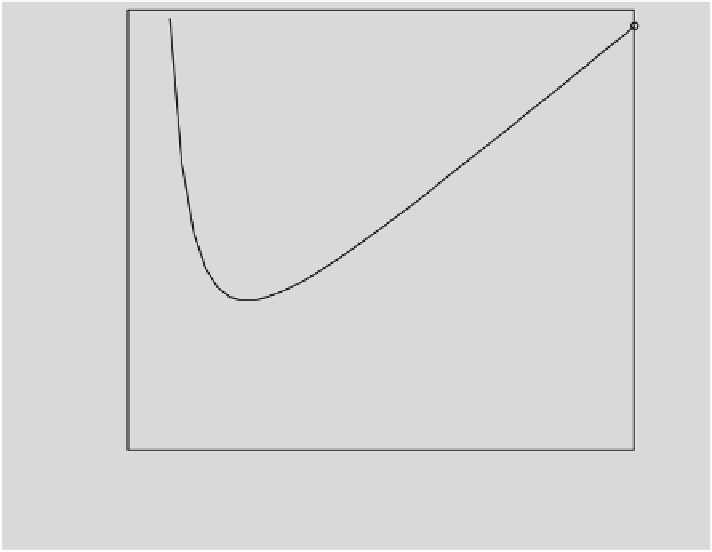Environmental Engineering Reference
In-Depth Information
2
constant discharge
1.8
1.6
1.4
1.2
1
0.8
Possible states
Asympotic line
0.6
0.4
0.2
h
crit
0
0
0.5
1
1.5
2
water level above ground
Fig. 11.5 Energy height and water level characteristic for open channel flow
Ideal fluids are quite rare, but they exist. Helium below a temperature of 2.17
K
becomes a suprafluid without viscosity. However, there are situations with more
common conditions, in which potential flow theory provides an approximate
solution. At high velocities disturbances due to friction, for example at the bound-
ary of an obstacle, cannot develop into the fluid, at least not within the short time of
the passing fluid. Obstacles in a fast flowing fluid can thus be treated by potential
flow. Also for fluids with high Reynolds numbers the Euler equations can be taken
as an approximation if the flow is far away from any walls and not turbulent (Guyon
et al.
1997
).
Potential flow also plays an important role in hydraulic engineering (Schroder
1995
). From (
11.8
) an explicit formula for total pressure
p
can be derived. For the
steady state in the gravity field follows directly:
p ¼ p
ref
þ rgz
2
v
2
(11.9)
where
z
denotes the opposite direction of gravity,
g
acceleration due to gravity, and
p
ref
a pressure reference value. If, for constant density, dynamic pressure
p
dyn
¼
p rgz
is expressed as height of a fluid column (denoted as
h
), the result is:
v
2
2
g
h ¼ h
ref
(11.10)










































































